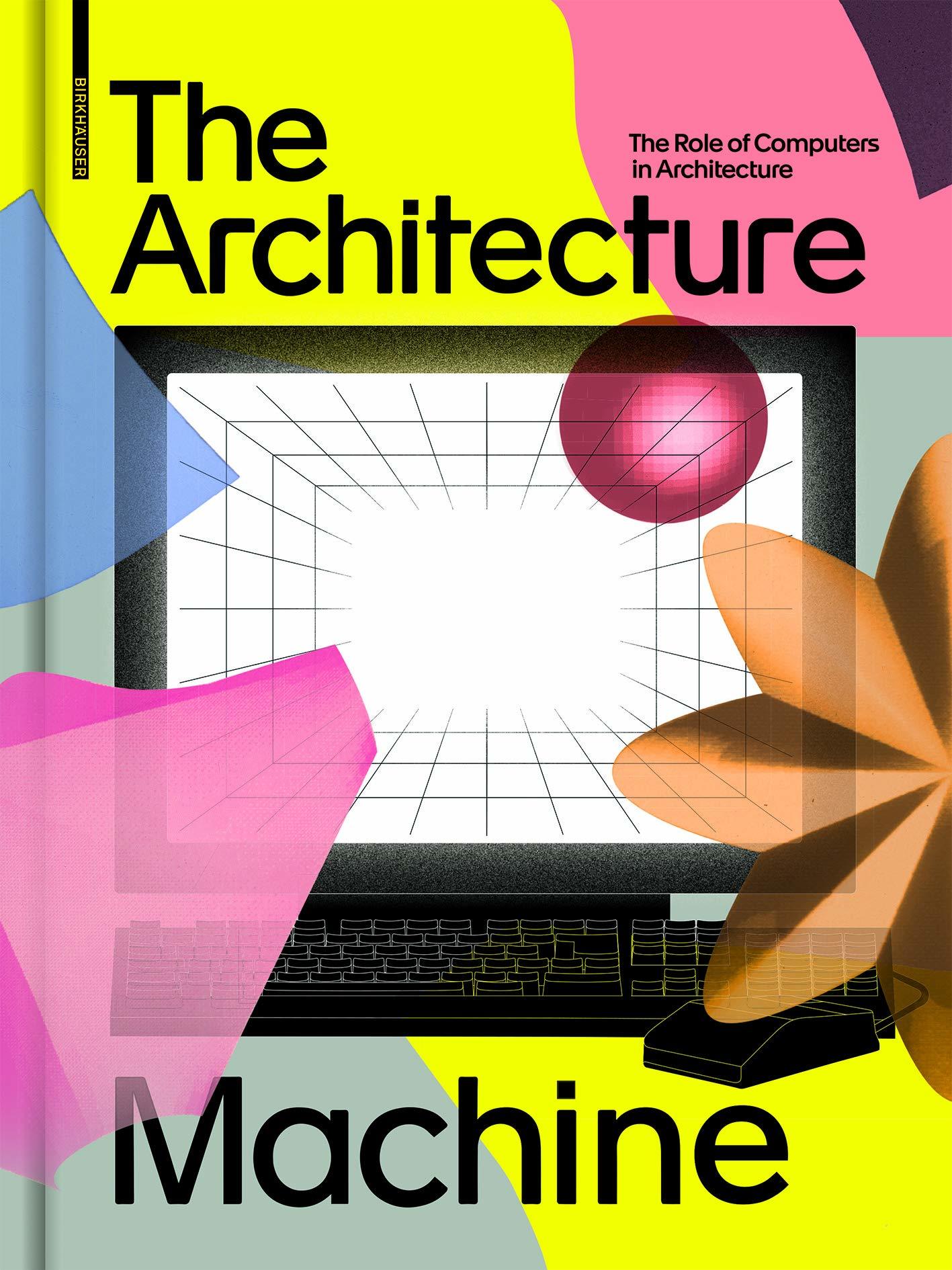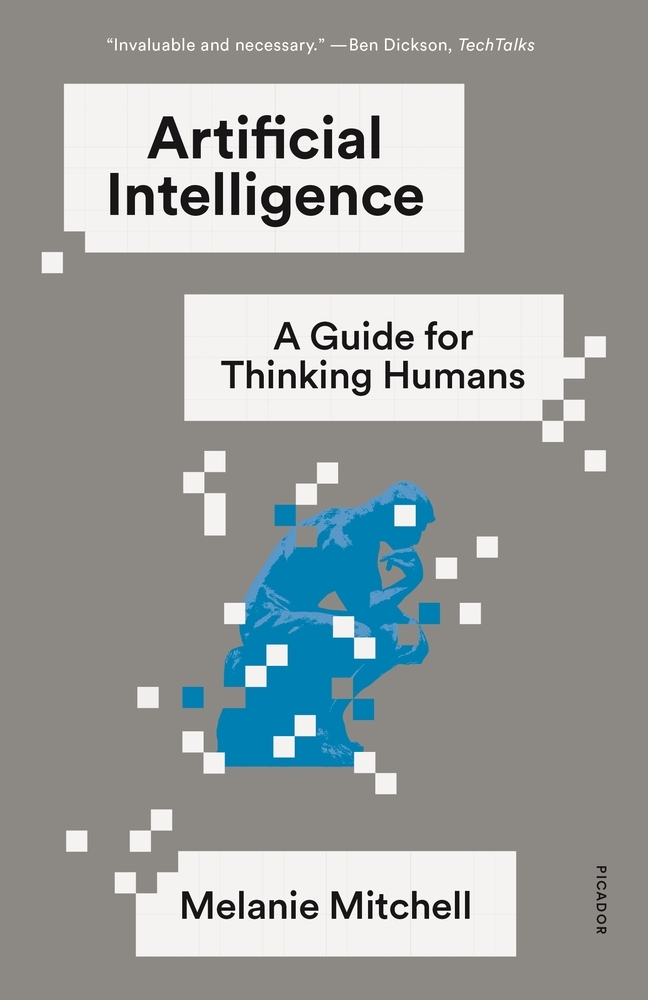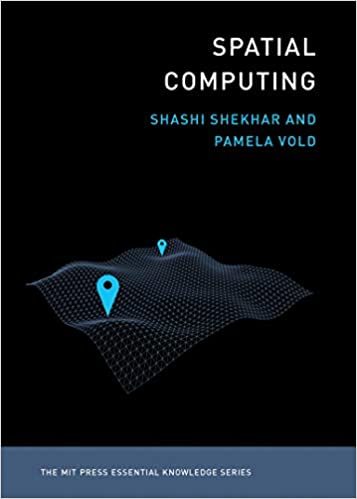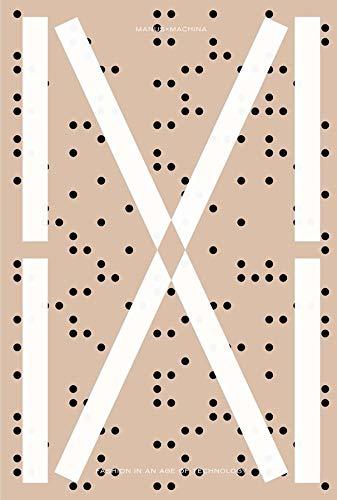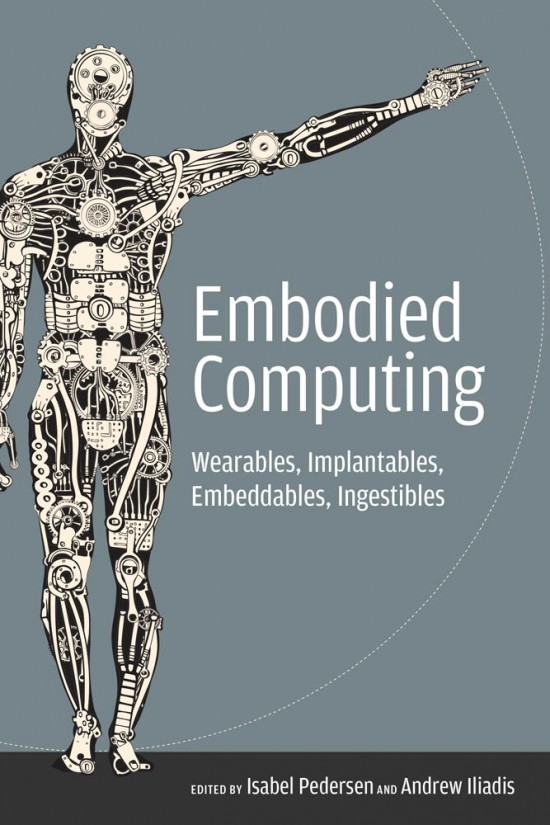Kappe Library Selects Volumes Engaging Computational Design, Implantables, and Couture
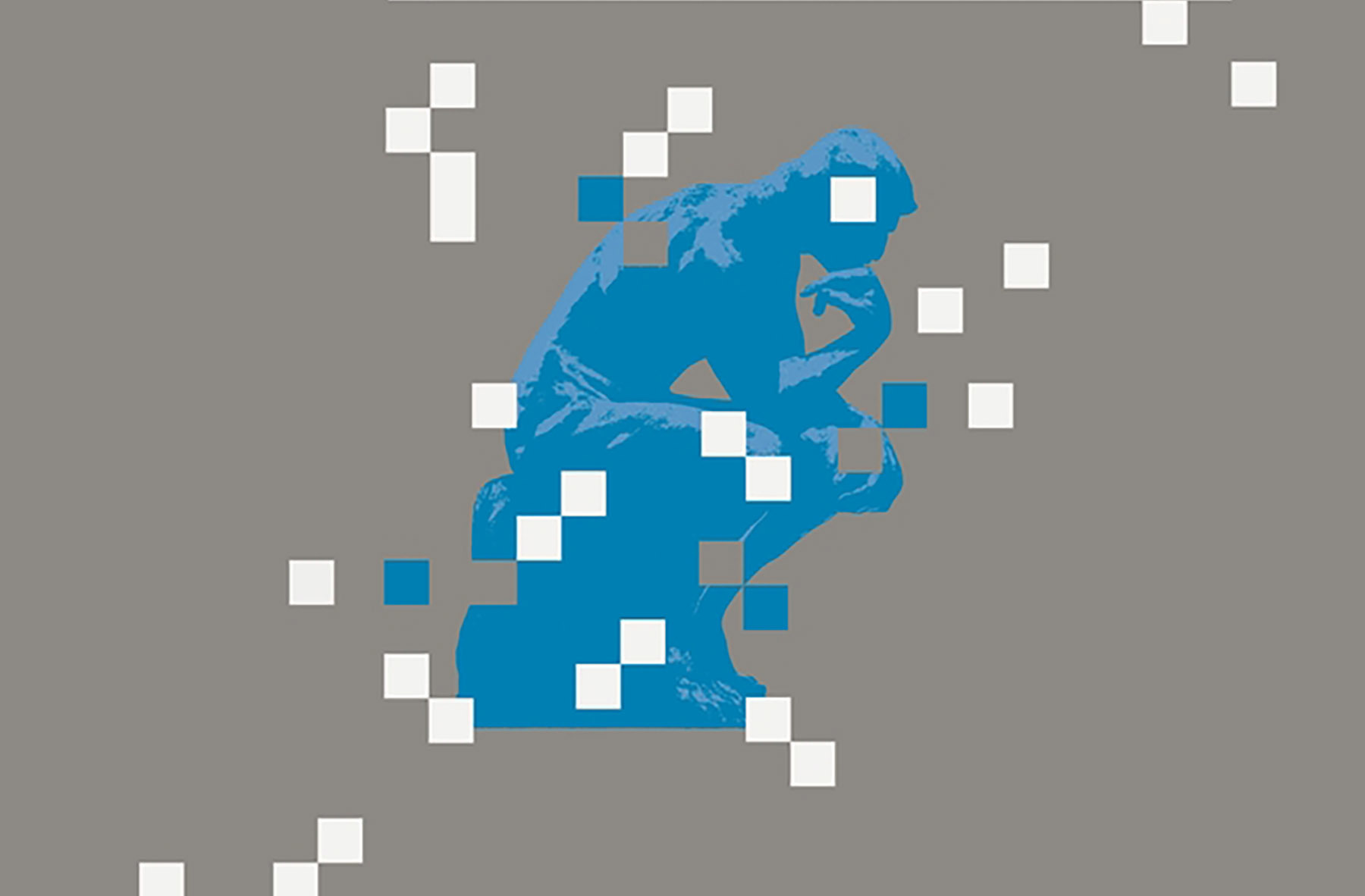
The Kappe Library reading list for May 2021 features some recent books in technology relating to architecture, media, and culture acquired by SCI-Arc’s Kappe Library in the last twelve months. The volumes represented in this month’s list consider how differentials of power can be challenged and changed through examinations feminism as it relates to and affects the current state of AI; explore ethical, social, and conceptual issues that arise in relation to such devices as fitness monitors, neural implants, and a toe-controlled computer mouse; and visually feast upon the paradoxical relationship between the artisanal and the technological in haute couture fashion.
The Architecture Machine: The Role of Computers in Architecture, Edited by Teresa Fankhänel and Andres Lepik, Birkhäuser, 2020, 9783035621549
Today, it is hard to imagine the everyday work in an architectural practice without computers. Bits and bytes play an important role in the design and presentation of architecture. The book, which is published in the context of an exhibition of the same name of the Architekturmuseum der TUM at the Pinakothek der Moderne in Munich (October 14, 2020 to January 10, 2021), for the first time considers—in depth— the development of the digital in architecture. In four chapters, it recounts this intriguing history from its beginnings in the 1950s through to today and presents the computer as a drawing machine, as a design tool, as a medium for telling stories, and as an interactive communication platform. The basic underlying question is simple: Has the computer changed architecture? And if so, by how much? A call to reclaim and rethink the field of designing as a liberal art where diverse voices come together to shape the material world.
Artificial Intelligence : A Guide for Thinking Humans, Melanie Mitchell, Picador, 2020, 9781250758040
No recent scientific enterprise has proved as alluring, terrifying, and filled with extravagant promise and frustrating setbacks as artificial intelligence. The award-winning author Melanie Mitchell, a leading computer scientist, now reveals AI’s turbulent history and the recent spate of apparent successes, grand hopes, and emerging fears surrounding it.
Interweaving stories about the science of AI and the people behind it, Artificial Intelligence brims with clear-sighted, captivating, and accessible accounts of the most interesting and provocative modern work in the field, flavored with Mitchell’s humor and personal observations. This frank, lively book is an indispensable guide to understanding today’s AI, its quest for “human-level” intelligence, and its impact on the future for us all.
Architectural Intelligence : Selected Papers from the 1st International Conference on Computational Design and Robotic Fabrication (CDRF 2019), Edited by Philip F. Yuan, Springer, 2020, 9789811565687
This book presents selected papers from The 1st International Conference on Computational Design and Robotic Fabrication (CDRF 2019). Focusing on novel architecture theories, tools, methods, and procedures for digital design and construction in architecture, it promotes dialogs between architecture, engineer, computer science, robotics, and other relevant disciplines to establish a new way of production in the building industry in the digital age. The contents make valuable contributions to academic researchers and engineers in the industry. At the same time, it offers readers new ideas for the application of digital technology.
Is the first professional book on the application of artificial intelligence in architectural design and construction; introduces interdisciplinary research methods combining architecture, engineering, computer science, robotics, and other relevant fields; presents the latest research from leading international experts.
Data Feminism, Catherine D’Ignazio and Lauren F. Klein, MIT Press, 2020, 9780262044004
A new way of thinking about data science and data ethics that is informed by the ideas of intersectional feminism.
Today, data science is a form of power. It has been used to expose injustice, improve health outcomes, and topple governments. But it has also been used to discriminate, police, and surveil. This potential for good, on the one hand, and harm, on the other, makes it essential to ask: Data science by whom? Data science for whom? Data science with whose interests in mind? The narratives around big data and data science are overwhelmingly white, male, and techno-heroic. In Data Feminism, Catherine D'Ignazio and Lauren Klein present a new way of thinking about data science and data ethics—one that is informed by intersectional feminist thought.
Illustrating data feminism in action, D'Ignazio and Klein show how challenges to the male/female binary can help challenge other hierarchical (and empirically wrong) classification systems. They explain how, for example, an understanding of emotion can expand our ideas about effective data visualization, and how the concept of invisible labor can expose the significant human efforts required by our automated systems. And they show why the data never, ever “speak for themselves.”
Discrete : Reappraising the Digital in Architecture, Gilles Retsin, Wiley, 2019, 9781119500322 (available via ProQuest Ebook Central)
After two decades of experimentation with the digital, the prevalent paradigm of formal continuity is being revised and questioned by an emerging generation of architects and theorists. While the world struggles with a global housing crisis and the impact of accelerated automation on labor, digital designers’ narrow focus on mere style and continuous differentiation seems increasingly out of touch.
This issue charts an emerging body of work that is based on a computational understanding of the discrete part or building block – elements that are as scalable, accessible and versatile as digital data. The discrete proposes that a new, digital understanding of assembly, based on parts, contains the greatest promise for a complex, open-ended, adaptable architecture. This approach capitalizes on the digital economy and automation, with the potential of the digital to democratize production and increase access.
The digital not only has deep implications for how we design and produce architecture; it is first and foremost a new system of production with economic, social and political consequences that need to be taken into account. This issue presents a diverse body of work focused on the notion of the discrete: from design experiments and aesthetics, to urban models, tectonics, distributed robots, new material organizations and post-capitalist scenarios engaging with automation.
Embodied Computing : Wearables, Implantables, Embeddables, Ingestibles, Edited by Isabel Pedersen and Andrew Iliadis, MIT Press, 2020, 9780262538558
Body-centered computing now goes beyond the “wearable” to encompass implants, bionic technology, and ingestible sensors—technologies that point to hybrid bodies and blurred boundaries between human, computer, and artificial intelligence platforms. Such technologies promise to reconfigure the relationship between bodies and their environment, enabling new kinds of physiological interfacing, embodiment, and productivity. Using the term embodied computing to describe these devices, this book offers essays by practitioners and scholars from a variety of disciplines that explore the accompanying ethical, social, and conceptual issues
The contributors examine technologies that range from fitness monitors to neural implants to a toe-controlled mouse. They discuss topics that include the policy implications of ingestibles; the invasive potential of body area networks, which transmit data from bodily devices to the internet; cyborg experiments, linking a human brain directly to a computer; the evolution of the ankle monitor and other intrusive electronic monitoring devices; fashiontech, which offers users an aura of “cool” in exchange for their data; and the “final frontier” of technosupremacism: technologies that seek to read our minds. Taken together, the essays show the importance of considering embodied technologies in their social and political contexts rather than in isolated subjectivity or in purely quantitative terms.
Manus x Machina : Fashion in an age of technology, Andrew Bolton, Yale University Press, 2016, 9781588395924
The complex and often ambiguous relationship between the hand crafted and the machine made is examined in this intriguing look at the ever-changing world of fashion and taste. Manus x Machina traces styles of dress from one-of-a-kind works and haute couture created by highly skilled artisans, through the introduction of industrial manufacturing, to extraordinary recent technological advancements applied to high fashion, such as 3D printing, laser cutting, and computer-generated weaving and patterns.
The oppositional relationship between the machine, as representative of democracy and mass production, and the hand, as the hallmark of elitism, is explored in its many facets in this fascinating book. Paradoxically, technology in fashion has both advanced artistic creation and obscured the sense of the designer's expert hand. Similarly, handmade garments have come to represent either a nostalgia for lost craftsmanship or, in haute couture, a cult of personality and affluence. Interviews with renowned and cutting-edge designers such as Sarah Burton, Karl Lagerfeld, and Miuccia Prada discuss how technology can blur the line between haute couture and prêt-à-porter, and ultimately question the relevance of the distinction between hand and machine. A tour de force in art book production, Manus x Machina incorporates two volumes into its innovative package.
The main volume of the book includes a smaller hand-sewn booklet, which features the printed interviews, tucked into the back jacket flap. The outer cover of the main volume is made of three-ply plastic layers with high-frequency weld and die-cut flaps. The paperback cover is die cut (modelled on the punch cards used in the first automated weaving looms), and the main volume includes 5 different paper stocks and silver foil stamping, and is printed with both high-density and ultraviolet inks. The book also features new photography of extraordinary pieces, including intricate 19th-century floral designs by William Morris, handcrafted haute couture of designers such as Christian Dior and Alexander McQueen, and the specatuclar 3D creations of Iris van Herpen.
Moving Data : The iPhone and the Future of Media, Edited by Pelle Snickars and Patrick Vonderau, Columbia University Press, 2012, 9780231504386 (available via ProQuest Ebook Central)
The iPhone has revolutionized not only how people communicate but also how we consume and produce culture. Combining traditional and social media with mobile connectivity, smartphones have redefined and expanded the dimensions of everyday life, allowing individuals to personalize media as they move and process constant flows of data. Today, millions of consumers love and live by their iPhones, but what are the implications of its special technology on society, media, and culture?
Featuring an eclectic mix of original essays, Moving Data explores the iPhone as technological prototype, lifestyle gadget, and platform for media creativity. Media experts, cultural critics, and scholars consider the device's newness and usability—even its "lickability"—and its "biographical" story. The book illuminates patterns of consumption; the fate of solitude against smartphone ubiquity; the economy of the App Store and its perceived "crisis of choice"; and the distance between the accessibility of digital information and the protocols governing its use. Alternating between critical and conceptual analyses, essays link the design of participatory media to the iPhone's technological features and sharing routines, and they follow the extent to which the pleasures of gesture-based interfaces are redefining media use and sensory experience. They also consider how user-led innovations, collaborative mapping, and creative empowerment are understood and reconciled through changes in mobile surveillance, personal rights, and prescriptive social software. Presenting a range of perspectives and arguments, this book reorients the practice and study of media critique.
Spatial Computing (The Essential Knowledge Series), Shashi Shekhar, MIT Press, 2020, 9780262538046
Billions of people around the globe use various applications of spatial computing daily—by using a ride-sharing app, GPS, the e911 system, social media check-ins, even Pokémon Go. Scientists and researchers use spatial computing to track diseases, map the bottom of the oceans, chart the behavior of endangered species, and create election maps in real time. Drones and driverless cars use a variety of spatial computing technologies. Spatial computing works by understanding the physical world, knowing and communicating our relation to places in that world, and navigating through those places. It has changed our lives and infrastructures profoundly, marking a significant shift in how we make our way in the world. This volume in the MIT Essential Knowledge series explains the technologies and ideas behind spatial computing. The book offers accessible descriptions of GPS and location-based services, including the use of Wi-Fi, Bluetooth, and RFID for position determination out of satellite range; remote sensing, which uses satellite and aerial platforms to monitor such varied phenomena as global food production, the effects of climate change, and subsurface natural resources on other planets; geographic information systems (GIS), which store, analyze, and visualize spatial data; spatial databases, which store multiple forms of spatial data; and spatial statistics and spatial data science, used to analyze location-related data.
We Are Not Users : Dialogues, Diversity, and Design, Esaran Subrahmanian, Yoram Reich, and Sruthi Krisnan, MIT Press, 9780262043366
We live in a material world of designed artifacts, both digital and analog. We think of ourselves as users; the platforms, devices, or objects provide a service that we can use. But is this really the case? We Are Not Users argues that people cannot be reduced to the entity called “user”; we are not homogenous but diverse. That buzz of dissonance that we hear reflects the difficulty of condensing our diversity into “one size fits all.” This book proposes that a new understanding of design could resolve that dissonance, and issues a call to reclaim and rethink the field of designing as a liberal art where diverse voices come together to shape the material world. The authors envision designing as a dialogue, simultaneously about the individual and the social—an act enriched by diversity of both disciplines and perspectives.
The book presents the building blocks of a language that can conceive designing in all its richness, with relevance for both theory and practice. It introduces a theoretical model, terminology, examples, and a framework for bringing together the social, cultural, and political aspects of designing. It will be essential reading for design theorists and for designers in areas ranging from architecture to software design and policymaking.
